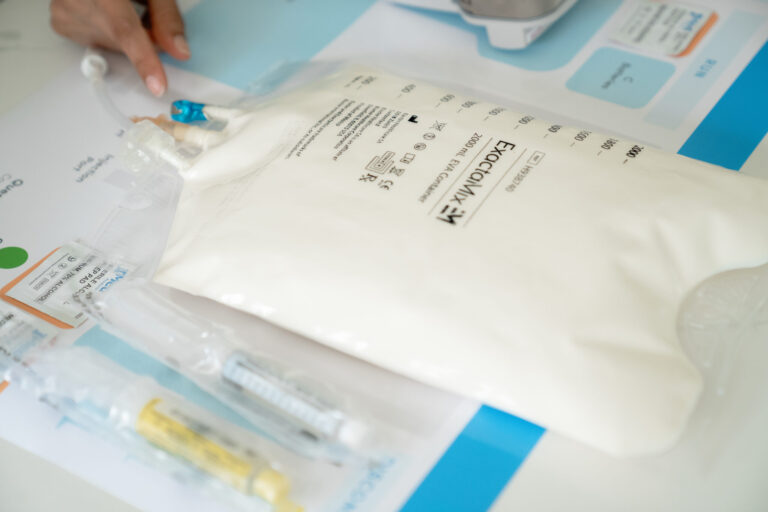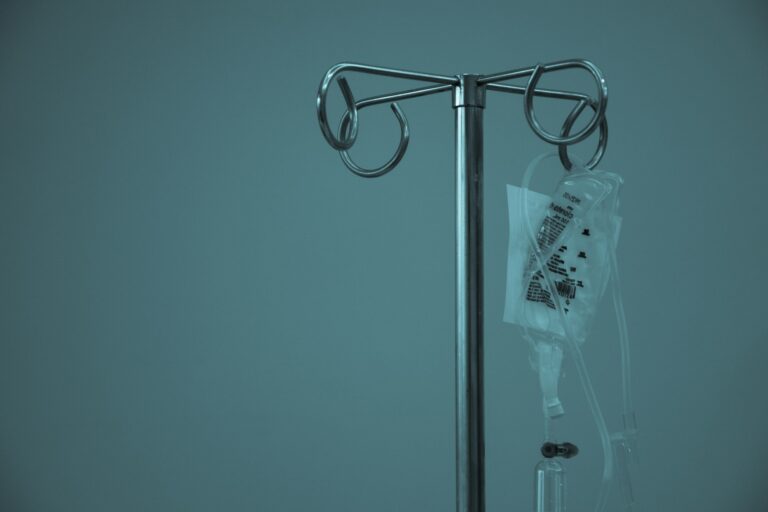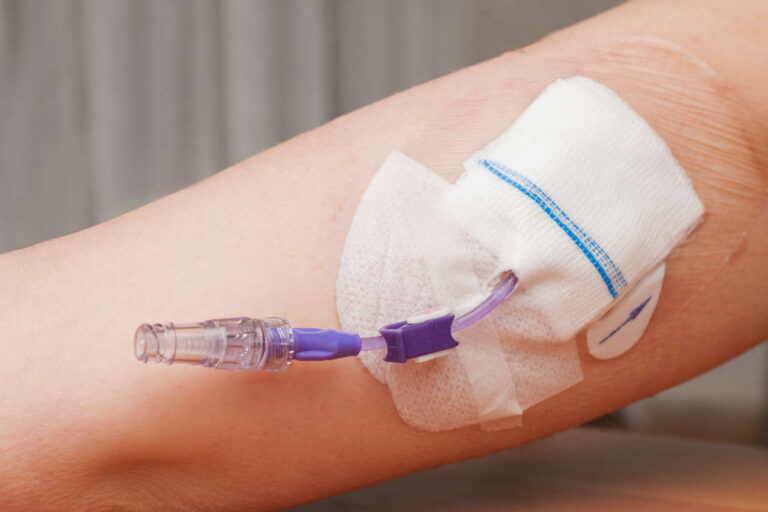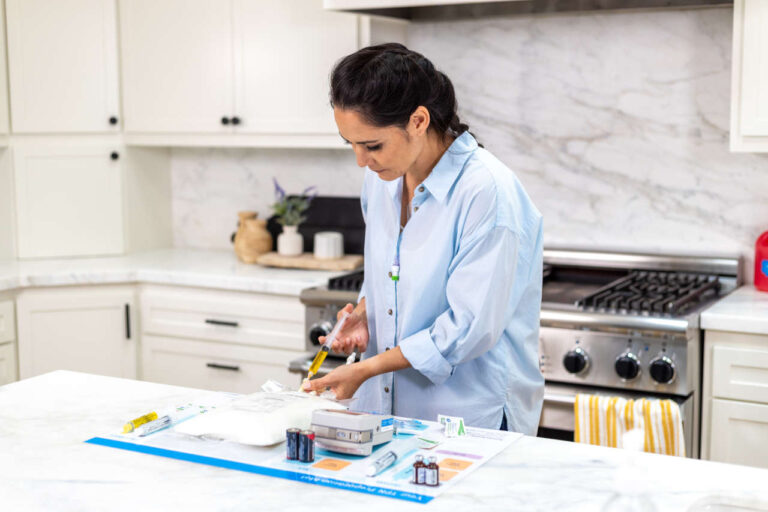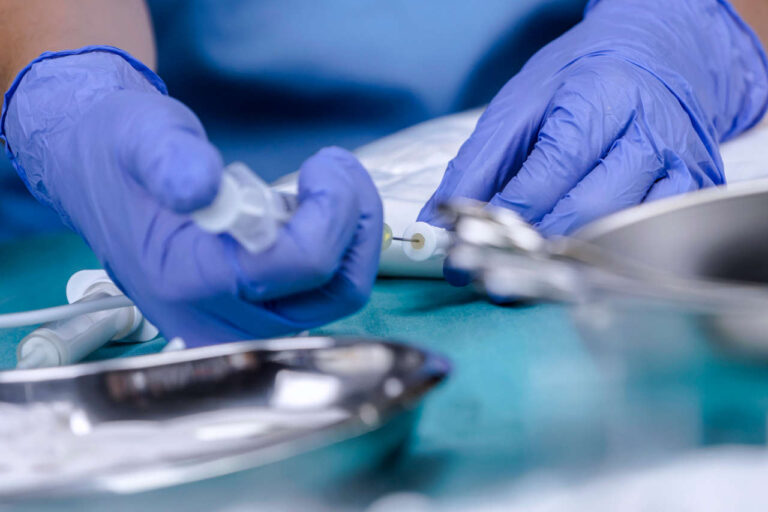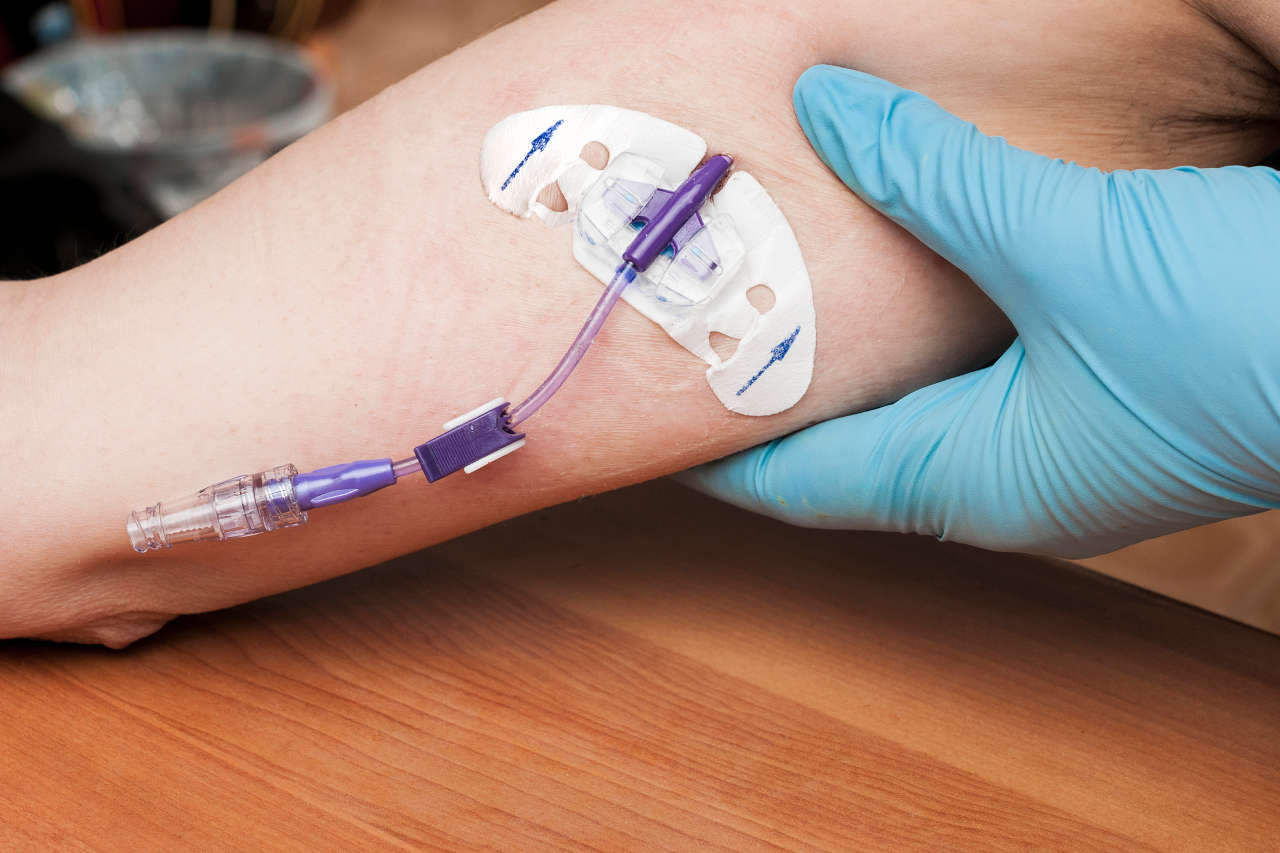
Si tu Terapia con TPN (nutrición parenteral total) Se espera que dure varias semanas, por ejemplo, de 2 a 6 semanas, y es probable que le coloquen una vía PICC en lugar de una vía intravenosa normal.
Sus fluidos intravenosos, siempre disponibles
Inventario completo, acceso sin complicacionesUna vía central de inserción periférica (PICC), también conocida como catéter central de inserción periférica, es un tubo (catéter) largo, ultradelgado y flexible que se inserta en una de las venas periféricas (como la basílica o la cefálica) de la parte superior del brazo. Luego, el tubo se introduce a través de un vaso sanguíneo más grande que llega al corazón, como la vena subclavia. vena cava superior, generalmente presente justo encima del lado derecho del corazón.
El procedimiento de colocación de una línea PICC lo realiza principalmente una enfermera registrada o un asistente médico utilizando una técnica estéril.
Antes de someterse al tratamiento con TPN a través de líneas PICC, es importante saber por qué se considera una opción preferida para Infusión TPN, cómo se coloca y qué riesgos o complicaciones puede esperar durante o después del TPN Infusión TPN.
¿Por qué se utiliza la vía PICC para la terapia TPN en lugar de vías intravenosas convencionales u otras vías centrales?
Hay varias razones por las que los proveedores de atención médica consideran proporcionar una infusión de TPN a través de una vía PICC en lugar de vías intravenosas regulares o líneas centrales:
Proporciona acceso a largo plazo
La vía PICC está diseñada para permanecer colocada durante varias semanas o incluso meses. Este acceso a largo plazo facilita que los pacientes reciban la terapia con TPN durante varios meses sin necesidad de reinserciones frecuentes.
Además, a diferencia de una vía intravenosa (IV) normal, que es más corta, la vía PICC es un tubo súper delgado y largo que brinda fácil acceso a la vena más grande cerca del corazón.
Reduce las molestias
La línea PICC reduce las molestias causadas por los pinchazos de agujas repetidos con las líneas intravenosas generales y puede administrar grandes cantidades de líquidos intravenosos, lo que podría no ser posible a través de las líneas intravenosas regulares.
Minimiza el riesgo de infecciones
Las vías PICC se consideran seguras y rentables porque Tienen un menor riesgo de infección que otras vías centrales y vías intravenosas regulares.
¿Cómo se administra TPN a través de la línea PICC?
Para proporcionar una infusión de TPN a través de una línea PICC, el proveedor de atención médica primero colocará una línea PICC.
Procedimiento de colocación de la vía PICC
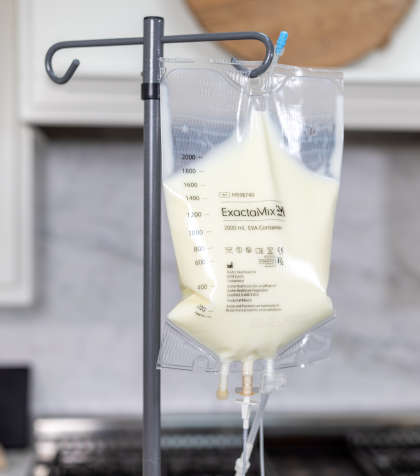
El procedimiento de inserción de una vía PICC dura aproximadamente una hora y generalmente se realiza en una sala general equipada con tecnología de diagnóstico por imágenes, como equipos de rayos X. Para insertar una vía PICC, el profesional de la salud realizará los siguientes pasos:
- Limpie el sitio de inserción e inyecte el anestésico, como lidocaína 1%, en el punto de inserción en la parte superior del brazo. El anestésico reduce el dolor y las molestias durante la incisión.
- Una vez inyectado el agente anestésico, el médico realizará con cuidado una pequeña incisión para acceder a la vena y colocar la vía PICC en ella.
- La línea PICC se introduce suavemente en los vasos y se avanza hacia el corazón mediante un ultrasonido.
- Se realizará una radiografía de tórax para garantizar que la línea PICC esté correctamente posicionada.
- Una vez que la línea se confirma con una radiografía, el médico la asegurará con un vendaje o puntos de sutura.
- Los dos o tres tubos que sobresalen de su piel, llamados lúmenes, se utilizarán para administrar la solución TPN a su cuerpo.
Infusión de TPN a través de la línea PICC
Una vez completada la inserción, el médico iniciará la infusión de TPN. Para saber cómo iniciar la infusión de TPN, lea nuestro artículo.: Guía completa paso a paso para la administración del TPN.
Pregunte por TPN Infusión en casa
¿Cómo cuidar y mantener su línea PICC después de la infusión TPN?
Una vez completado el proceso de infusión TPN, debe asegurar y mantener la línea con cuidado.
- Siempre enjuague y bloquee la vía PICC con solución salina y heparina después de la infusión de TPN. Su profesional de la salud o enfermero le dará instrucciones sobre cómo limpiar y enjuagar la vía semanalmente para evitar obstrucciones.
- Revise diariamente la zona de inserción para detectar signos de infección, inflamación o enrojecimiento. Si observa enrojecimiento o siente dolor en la zona de inserción, consulte a su profesional de la salud de inmediato.
- Evite levantar pesos pesados ya que hacerlo puede afectar su línea.
- No utilice el brazo afectado para controlar la presión arterial.
- Cubra su vía PICC con una envoltura plástica o una venda impermeable cuando se duche.
- No cambie el apósito de su vía PICC usted mismo; en su lugar, pídale a su enfermera o a un cuidador capacitado que lo coloque sobre él.
¿Existen riesgos asociados con la administración de TPN a través de una vía PICC?
No existen riesgos particulares asociados con la administración de TPN a través de una vía PICC en comparación con otros métodos de administración, siempre que la vía se fije y se mantenga correctamente. Sin embargo, la vía PICC puede obstruirse con medicamentos o coágulos de sangre si no se irriga adecuadamente con solución salina y heparina después de la infusión de TPN.
Si la línea se obstruye, el fluido TPN podría no fluir con fluidez. Esto requiere retirar la línea y reemplazarla por una nueva línea PICC.
Cuándo consultar a su proveedor de atención médica
Consulte a su proveedor de atención médica inmediatamente si:
- Tiene fiebre alta o experimenta dificultad para respirar, picazón o mareos.
- Su línea no se descarga o está bloqueada.
- Su línea PICC tiene una fuga.
- Tiene sangrado en el sitio de la vía PICC.
- Su línea PICC se sale accidentalmente.
- El apósito de la vía PICC se afloja o se ensucia.
REFERENCIAS:
- Johansson, E., Hammarskjöld, F., Lundberg, D. y Arnlind, MH (2013). Ventajas y desventajas de los catéteres venosos centrales de inserción periférica (PICC) en comparación con otras vías venosas centrales: una revisión sistemática de la literatura. Acta oncológica, 52(5), 886-892. https://doi.org/10.3109/0284186X.2013.773072
- Comas, M., Domingo, L., Jansana, A., Lafuente, E., Civit, A., García-Pérez, L., … & Castells, X. (2022). Análisis de costo-efectividad de catéteres centrales insertados periféricamente versus catéteres venosos centrales para nutrición parenteral hospitalaria. Revista de seguridad del paciente, 18(7), e1109-e1115. DOI: 10.1097/PTS.0000000000001028

